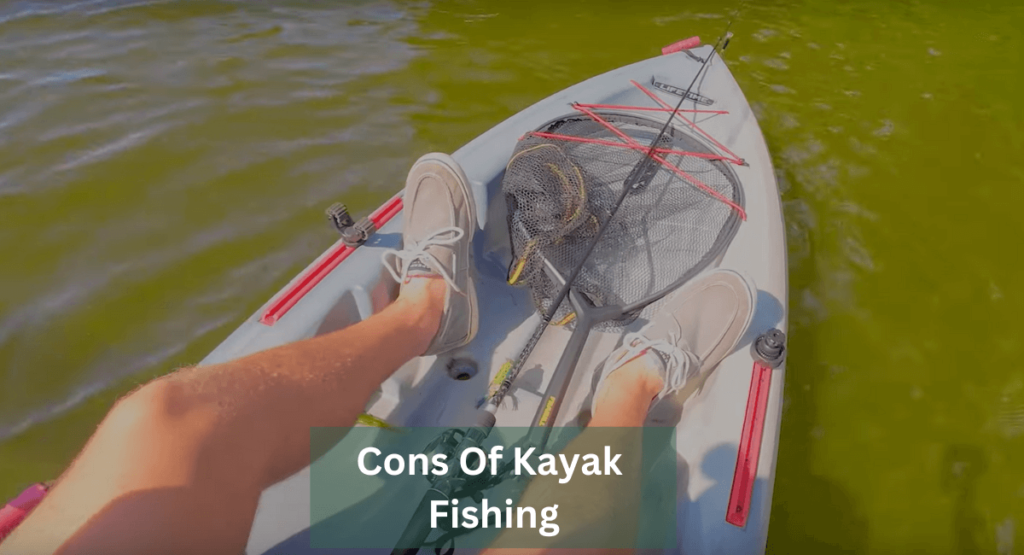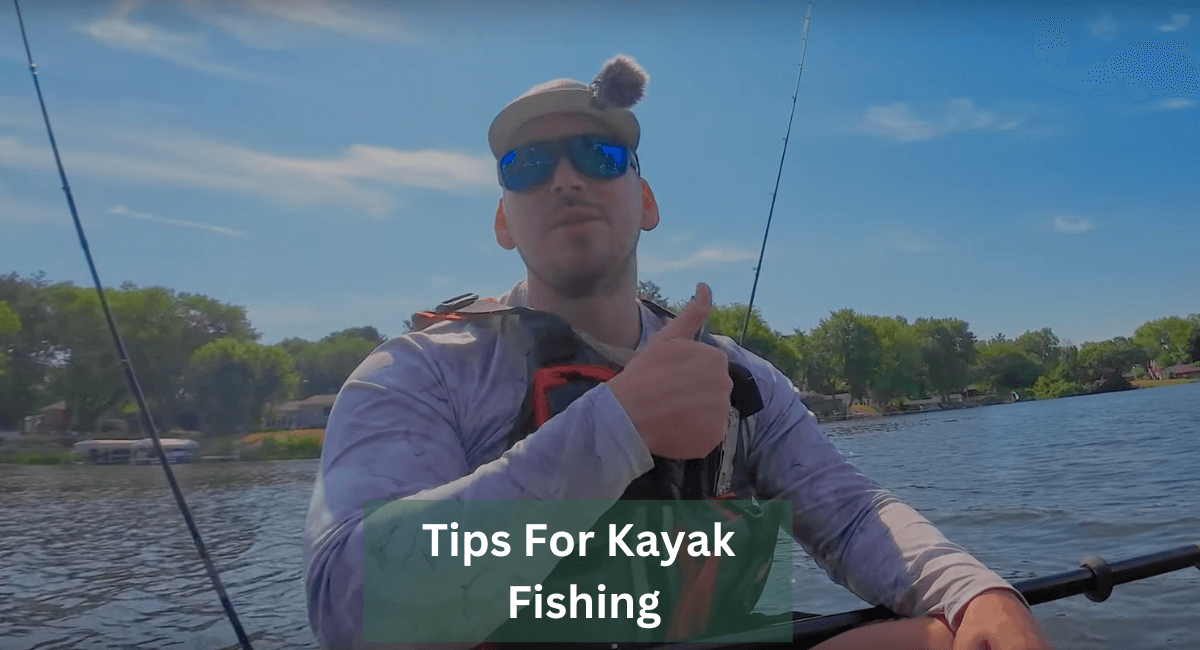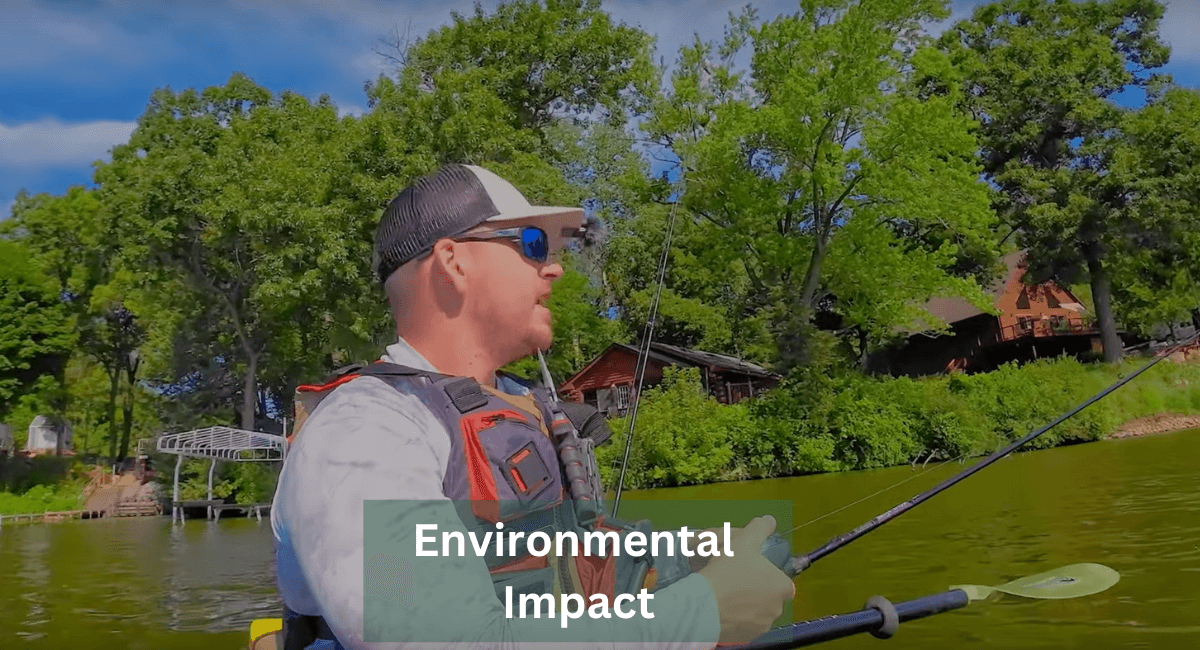Kayak fishing offers portability and access to remote fishing spots. Challenges can include stability issues and limited storage space.
Kayak fishing is a popular outdoor activity that combines the thrill of fishing with the tranquility of being on the water. It allows anglers to reach remote and hard-to-reach fishing areas that are inaccessible by larger boats. However, there are certain drawbacks to kayak fishing, such as the potential for reduced stability on the water and limited storage space for equipment and catch.
Despite these challenges, many fishing enthusiasts are drawn to the unique experience and adventure that kayak fishing offers. Let’s explore the pros and cons of this exciting sport in more detail.
Pros Of Kayak Fishing
Experience the freedom and tranquility of kayak fishing, allowing you to access remote areas and enjoy a closer connection with nature. The mobility and stealth of kayaks also offer a greater chance of catching fish in challenging waters, making it a thrilling and rewarding experience for anglers.
The pros of kayak fishing are abundant and varied, making it a popular choice for both seasoned anglers and newcomers alike. The sport offers numerous benefits, from physical health advantages to the ability to access remote fishing spots, along with a stealthy approach.
Let’s delve into each of these in more depth. Physical Health Benefits Kayak fishing provides an excellent opportunity for physical exercise, helping to improve cardiovascular health and overall fitness. Maneuvering the kayak through the water requires upper body strength and core stability, leading to an effective full-body workout. Additionally, the tranquil nature of kayak fishing lends itself to reducing stress and promoting mental well-being.
Access to Remote Fishing Spots One of the most significant advantages of kayak fishing is the ability to reach remote fishing locations that are inaccessible by larger boats. This opens up a world of possibilities for anglers seeking unspoiled and less-pressured fishing grounds, providing a sense of adventure and exploration that is unparalleled in traditional fishing methods.
Stealthy Approach The stealthy nature of kayaks allows anglers to approach fish quietly and unobtrusively, giving them a distinct advantage in targeting wary species. With minimal disturbance to the water, kayak anglers can sneak up on their quarry, leading to increased opportunities for successful catches.
This silent approach also enhances the overall fishing experience by immersing anglers in the natural surroundings, offering a more intimate connection to the environment. Overall, the pros of kayak fishing encompass improved physical health, access to remote fishing spots, and a stealthy approach, making it a compelling and rewarding choice for anglers looking to enhance their fishing experiences.
Cons Of Kayak Fishing

Despite its many advantages, kayak fishing also comes with some drawbacks. It’s essential to be aware of the cons to make informed decisions before heading out on the water.
Weather-dependent
Kayak fishing is highly weather-dependent, making it challenging to plan trips. Unpredictable weather conditions can pose risks and interfere with your fishing experience.
Limited Storage Space
Limited storage space on a kayak can be a significant inconvenience. You may struggle to bring along all the necessary fishing gear and supplies, limiting your fishing options.
Safety Concerns
Safety concerns are paramount when kayak fishing. The open water and small size of the kayak can increase the risk of accidents or mishaps, requiring extra caution and preparation.
Kayak Fishing Gear
Kayak fishing gear plays a crucial role in maximizing your fishing experience on the water. Having the right equipment can enhance your comfort, safety, and overall success in landing that big catch. Let’s delve into the essential gear and optional accessories you may consider for your next kayak fishing adventure.
Essential Equipment
- Fishing Rod: Crucial for catching fish from your kayak.
- Paddle: Maneuver your kayak efficiently through the waters.
- Personal Flotation Device (PFD): Ensure your safety on the water.
- Anchoring System: Keep your kayak stationary when needed.
Optional Accessories
- Fish Finder: Helps locate fish and determine water depth.
- Kayak Cart: Easily transport your kayak to and from the water.
- Seat Cushion: Enhance comfort during long fishing trips.
Choosing The Right Kayak
Kayak fishing can be an exhilarating and rewarding experience, but choosing the right kayak is crucial for a successful outing. There are several factors to consider when selecting a kayak, such as the type of kayak and the balance between stability and speed. Let’s explore the pros and cons of each choice to help you make an informed decision.
Sit-on-top Vs. Sit-inside
When deciding between a sit-on-top and a sit-inside kayak, it’s important to weigh the benefits and drawbacks of each option. A sit-on-top kayak offers greater visibility and easier access to gear, which is ideal for fishing. On the other hand, a sit-inside kayak provides better protection from the elements and is more suitable for colder waters.
Stability Vs. Speed
Choosing between stability and speed is a common dilemma for kayak anglers. A wider, more stable kayak offers better balance, making it easier to fish while standing. Conversely, a narrower kayak provides greater speed and maneuverability, allowing you to cover more water in less time. Finding the right balance between stability and speed is essential for an enjoyable fishing experience.
Tips For Kayak Fishing

Discover the benefits of kayak fishing, offering stealth and access to secluded spots. Enjoy the thrill of reeling in your catch while navigating the waters with ease. Despite its advantages, ensure safety precautions are in place for a smooth fishing experience on a kayak.
Planning Ahead
Before you set out on your kayak fishing adventure, it’s important to spend some time planning. This will help ensure that you have a safe and successful trip. Here are some tips to consider:
- Check the weather forecast for the day of your fishing trip and choose a day with favorable conditions.
- Research the body of water where you plan to fish. Look for information on fish species, water currents, and any potential hazards.
- Create a checklist of essential items to bring, such as your fishing gear, personal flotation device (PFD), sunscreen, snacks, and water.
- Inform someone about your fishing plans, including where you’ll be launching from and when you expect to return.
- Consider the time of day for your fishing trip. Some fish are more active during certain times, so it’s worth researching the best times to target your desired catch.
Mastering Kayak Control
Once you’ve planned and are ready to hit the water, it’s crucial to master kayak control. This will help you navigate effectively and make the most out of your fishing experience. Here are some pointers to enhance your control:
- Practice paddling and maneuvering your kayak in calm waters before venturing into more challenging environments.
- Learn different paddle strokes, such as the forward stroke, reverse stroke, and sweep stroke, to effectively move your kayak in the desired direction.
- Experiment with different kayak positions to find the balance that works best for you. Adjusting your weight distribution can greatly impact your stability and control.
- Always keep a close eye on your surroundings and be aware of other boaters or obstacles in the water. This will help you make quick adjustments and avoid any potential collisions.
- Take your time when casting your line. Make sure you have a solid stance and maintain your balance to avoid any mishaps and make accurate casts.
- Consider using an anchor or drift chute to help you maintain your position in windy conditions or when targeting specific spots.
Environmental Impact

Kayak fishing offers numerous benefits, but it is essential to consider its environmental impact. With a low carbon footprint and a focus on respecting wildlife, kayak fishing is an environmentally friendly way to enjoy your favorite hobby. Let’s dive deeper into the positive and negative effects of kayak fishing on the environment.
Low Carbon Footprint
One of the significant advantages of kayak fishing is its low carbon footprint. As an eco-friendly alternative to motorized boats, kayaks produce zero emissions, making them an excellent choice for nature lovers. Unlike traditional boats that rely on fossil fuels, kayaks are powered by human paddling, reducing air and water pollution.
By choosing to fish from a kayak, you contribute to reducing your carbon emissions and preserving the environment. Additionally, this eco-friendly approach to fishing allows you to explore even the most secluded and delicate ecosystems that may be inaccessible to larger vessels.
Respecting Wildlife
Another important consideration when it comes to kayak fishing is the respect for wildlife. Unlike larger boats, kayaks do not disturb the water or create a loud noise, minimizing the impact on aquatic life. The quieter nature of kayaks ensures that you can observe and appreciate wildlife up close without causing unnecessary stress or disruption.
Moreover, kayaks have a minimal impact on the habitat of marine and freshwater species, including plants, fish, and birds. Since they can access shallow waters, kayakers can maneuver without damaging vegetation or disturbing nesting areas, preserving the natural balance of these ecosystems.
However, it is crucial to be attentive to wildlife while kayak fishing. Avoid sudden movements or loud noises, as they can startle the animals and disturb their natural behavior. Remember that you are visiting their home, so always prioritize their well-being and safety.
Overall, kayak fishing provides an eco-friendly way to indulge in your passion while nurturing the environment. By embracing a low carbon footprint and showing respect for wildlife, you can enjoy an unforgettable fishing experience while actively contributing to the conservation of our precious waterways and all the incredible creatures that call them home.
Frequently Asked Questions For Pros And Cons Of Kayak Fishing
Q: Is Kayak Fishing Better Than Traditional Fishing Methods?
A: Kayak fishing offers a unique experience with its stealthy maneuvering abilities and access to remote fishing spots. Unlike traditional fishing methods, kayaks allow anglers to get closer to the action and cast their lines in areas inaccessible to larger boats.
However, traditional methods may be more comfortable and offer greater storage options.
Q: What Are The Advantages Of Kayak Fishing?
A: Kayak fishing has several advantages, including its affordability, portability, and eco-friendliness. Kayaks are cheaper to purchase and maintain compared to larger boats, and they can easily be transported to different fishing spots. Additionally, kayaks have a minimal impact on the environment and allow anglers to enjoy a peaceful fishing experience.
Q: Are There Any Safety Concerns With Kayak Fishing?
A: Safety is an important consideration in kayak fishing. It is essential to wear a life jacket at all times, especially in rough waters. Familiarize yourself with the kayak’s stability and practice self-rescue techniques. It is also recommended to fish with a buddy and inform someone of your fishing plans.
Always check weather conditions and be aware of potential hazards in the water.
Q: Can I Use A Regular Kayak For Fishing?
A: While it is possible to use a regular kayak for fishing, specially designed fishing kayaks offer additional features and advantages. Fishing kayaks often have built-in rod holders, storage compartments, and stability features that enhance the angler’s experience. They are designed with the needs of anglers in mind, providing better maneuverability and fishing-specific amenities.
Conclusion
Kayak fishing offers a unique and thrilling outdoor experience for anglers of all skill levels. While the sport provides an intimate connection with nature and access to secluded fishing spots, it also comes with limitations, such as potential safety concerns and limited storage space.
Overall, kayak fishing can be a rewarding and enjoyable activity, provided anglers take the necessary precautions and make informed decisions.
